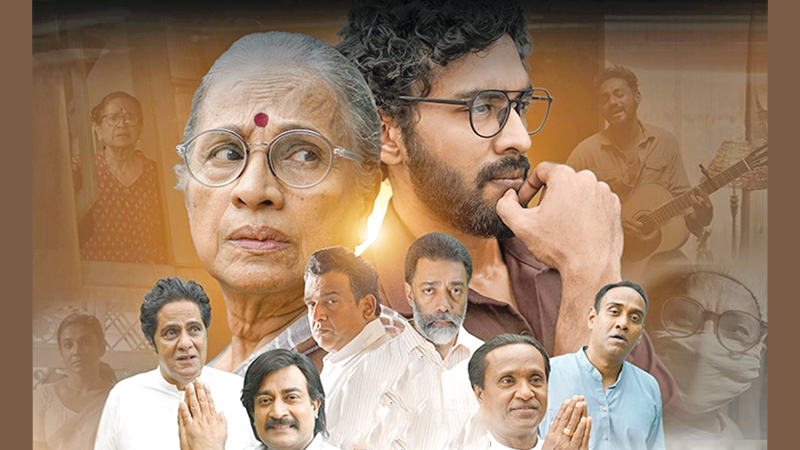 You’re probably sick of reading all the ‘‘Rani’’ reviews and going to all those panel discussions, plus we’ve seen the outrage by people who knew Dr. Manorani Saravanamuttu personally, but I just wanted to go watch the movie from a layman’s perspective; not as some political pundit or film critic.
You’re probably sick of reading all the ‘‘Rani’’ reviews and going to all those panel discussions, plus we’ve seen the outrage by people who knew Dr. Manorani Saravanamuttu personally, but I just wanted to go watch the movie from a layman’s perspective; not as some political pundit or film critic.
The last Asoka Handagama movie I watched was Alboroda with my then girlfriend in 2021. She was a very serious type, especially when it came to these leftist socio-politically tinged creations, so she obviously got angry when I pointed out that the filmmakers must have dropped a bar of chocolate to simulate the pivotal scene in the movie – the one when Neruda’s housekeeper uses the outhouse after the poet ravages that ‘Sakkili’ woman.
Getting the tickets
We were marking the founder of Lake House D.R. Wijewardene’s birthday at the publishing house when my friend and mentor Romesh de Silva called me up to go see ‘Rani’. Now I’ve been hyping up this movie in my social circles, but quickly dropped the thought of watching it when it came out. But I capitulated and agreed to join him at Liberty’s Scope theatre.
“The last time I was here, we watched ‘Cassandra Crossing’,” he said.
“Was it a war movie?” I asked.
“No, it was about a train”.
As of February 14, 2025, the 2025 Sinhala film ‘Rani’ had grossed Rs. 100 million, making it one of the highest-grossing films in Sri Lankan cinema history – the Wikipedia entry said.
This was confirmed by the cashier at the box office.
“‘Rani’ was houseful for three straight weeks; this wasn’t just the weekends and we have six screenings a day,” he said.
“This is just for Scope?” I asked.
He looked me dead in the eye, made a circular motion with his hand, and said, “No, all the theatres.”
We grabbed a bag of caramel popcorn, spilled some in the lobby and hurried to our seats for the mandatory 20 minutes of ads before the film rolled.
The theatre was nearly empty that Tuesday (February 25) afternoon. I guess four weeks in; the hype was finally dying down.
Now I’m not going to bore you about what I saw in this film because you have either read about it or watched it yourselves by now. Instead, I’m going to talk about what I noticed.
Cinema style
Handagama doesn’t pull anything fancy. The cinematography was pretty straightforward and captured the essentials. I just don’t understand the whole ‘fill ups’ close to the end with Manorani leaving footprints in the sand and those slow-motion shots of the ocean.
The use of shaky cam was endearing. Too many filmmakers today are obsessed with stabilising every shot in post-production, making their films look like glorified commercials.
Handagama et al tried to keep the film as periodically accurate as possible. I loved the small details like early 90s product labelling and brand aesthetics, but felt like walking out into Liberty circle with both fists up after seeing the modern light switches on the walls.
The wardrobe was on point except for those gigantic snapback baseball caps worn by Gihan and the President.
“Smoking Queen”
Asoka, if you are reading this, tell me why you put so many shots of Manorani and other characters smoking.
I mean, we know that people were smoking a lot during that period, but I personally felt like this was some sort of subliminal messaging.
La Pieta or “the Pity” is one of Christianity’s most famous icons. It depicts Mother Mary cradling the body of Jesus after His death. The appearance of La Pieta on a stained glass behind Dr. Manorani as she makes her “Oh, Absalom, my son” speech at Richard’s funeral makes things even more poignant.
So when a stained-glass La Pieta appeared behind Dr. Manorani during her “Oh, Absalom, my son” speech at Richard’s funeral, the symbolism hit hard.
Handagama sneaks his love for theatre into ‘Rani’, with nods to his own play, ‘Magatha’, and the fact that both Richard and his mother were accomplished thespians. The film also acknowledges the cultural landscape of the time—like the fascist gang butchering Nanda Malini’s protest songs ‘Pawana’ and ‘Yadamin Banda’ in the final scene.
Take away
Even after three decades, ‘Rani’ holds a deep sentimental appeal.
Not long ago, tens of thousands of young people took to the streets to protest state corruption and mismanagement. Once again, Sri Lankan mothers feared for their sons. Once again, Nanda Malini’s songs were sung in chorus as the authorities cracked down on dissent.
Our collective trauma lingers. I finally understand why Sri Lankan mothers are so fiercely protective of their sons. We still have thuggish scoundrels who kill and maim for “patriotism.” Worse, we still have cowards whispering that Richard was a “traitor.”
I’m not here to take sides on who was right or wrong in the late ’80s and early ’90s.
But as a young man watching this film, I’m left with nothing but a sense of despair at the violence we have inherited in such a short history as a democracy. Yes, there are people willing to “kill” or “die” for the country—but how many are willing to put a plastic bottle in the bin, fill a pothole, or feed a homeless person?









